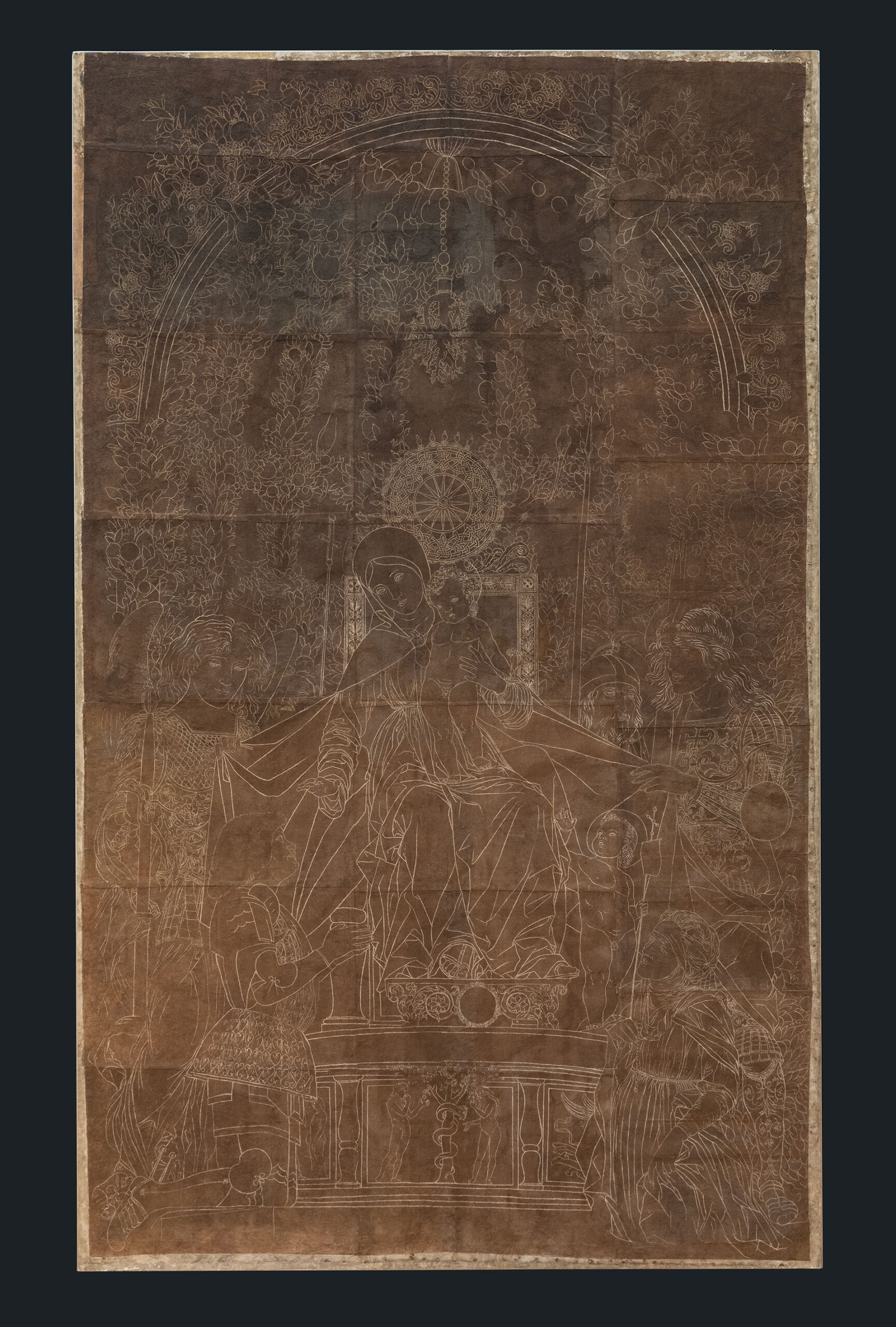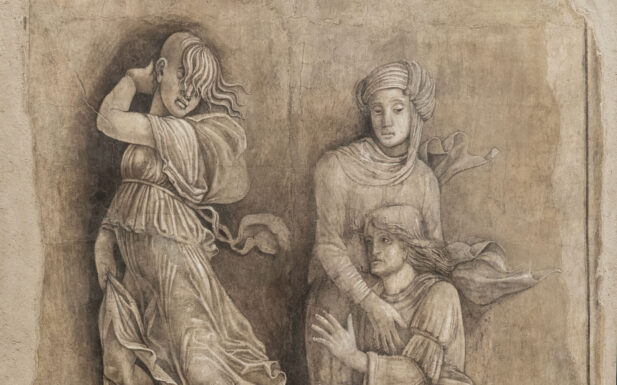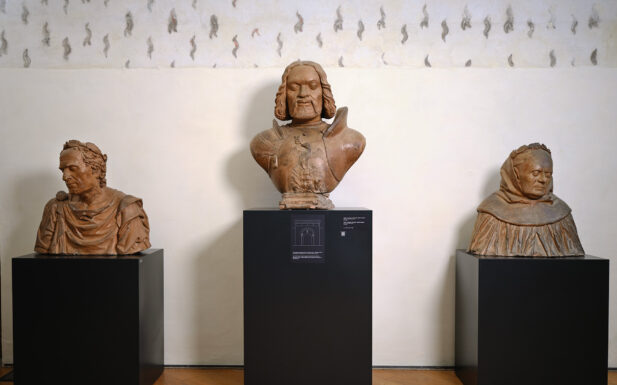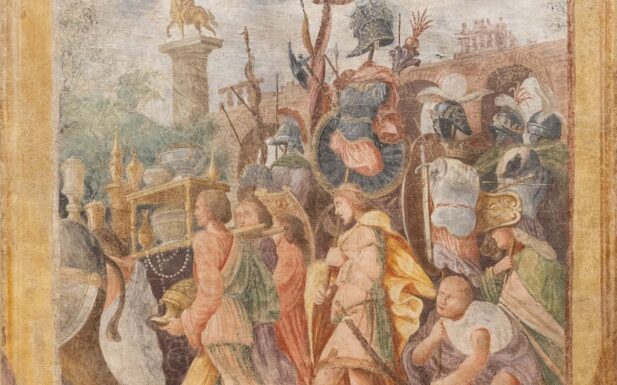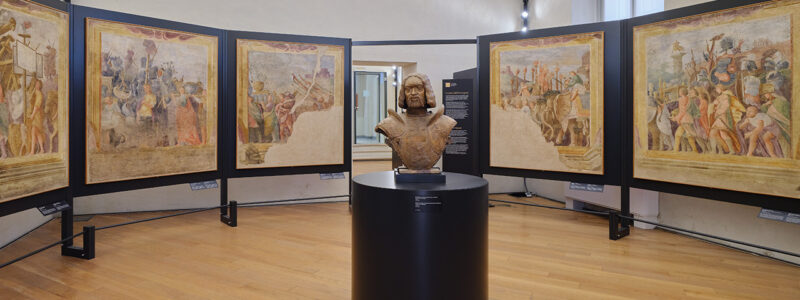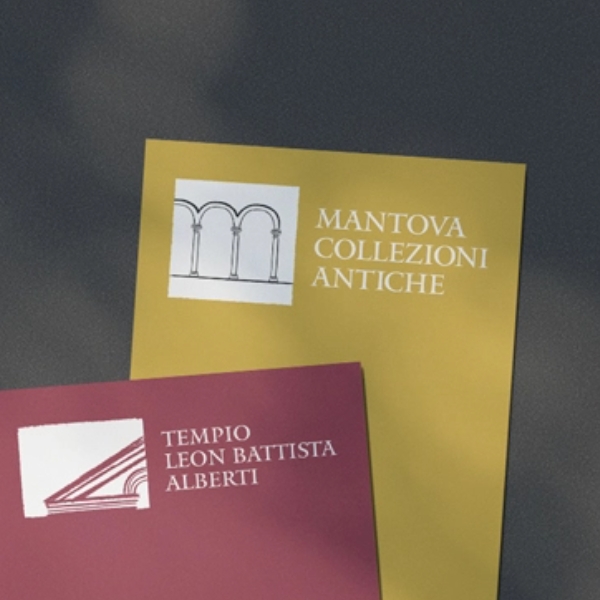The cast faithfully reproduces Andrea Mantegna’s Madonna della Vittoria altarpiece in full size. The work, now on display in the Louvre Museum (Paris), was painted at the behest of Marquis Francesco II Gonzaga, after the battle of Fornovo sul Taro, near Parma, between the troops led by the marquis himself and the army of Charles the Eighth, on 6 July 1495. The clash was bloody and the victory would soon prove precarious. Francis II decided to dedicate a votive altarpiece to the Madonna, to whom he was particularly devoted, to be placed in a new church built for the occasion and decorated according to a project conceived and designed by Mantegna himself. The realisation of the entire work took only a year and already on the first anniversary of the victory, 6 July 1496, a solemn procession accompanied the transport of the painting from the painter’s studio at the Church of San Sebastiano to the new chapel of the Church of Santa Maria della Vittoria in Mantua.
The large altarpiece depicts the Virgin Mary who, from her throne, with the Child in her arms and the infant Baptist on the right, placing her blessing hand on the head of the Marquis, portrayed kneeling in armour on the left. Behind Gonzaga, next to the throne, Saints Michael and Andrew can be recognised; on the other side are Saints Longinus and George, while the kneeling female figure in the foreground has been recognised as Saint Elisabeth, patroness of Isabella d’Este.
The painting remained in the votive church for which it was destined until the arrival in Mantua in 1797 of the French led by Napoleon Bonaparte, who decided to transfer it, despite the Municipality’s vehement protests, to Paris where it is still kept today. In view of the work’s departure, in order to preserve its memory, on behalf of Count Giovanni De Lazzara (1744-1833), the Mantuan painter Antonio Ruggeri (1771-1841), then a student of Painting at the Academy of Fine Arts in Mantua, made the cast between March and July 1797. Ruggeri arrived in Mantua from Padua at the beginning of March 1797 and certainly had time and opportunity to work directly on the original, as Mantegna’s painting, selected to be taken to Paris as a war confiscation as early as 14 February 1797, was only actually transferred to Paris in July 1798.
The restoration of the work conducted in 1990-1993 revealed the use of a very old watermarked paper – probably 16th-17th century – with moon crescents. The cardboard is made up of twenty sheets (62 x 43 cm) glued onto canvas (originally jute, now replaced with macrolon) and has a brown background, possibly due to the natural oxidation of the oily substances with which the paper must have been treated to make it transparent, on which the drawing traced with the tip of a brush in white tempera stands out.
1797
Tempera on tracing paper

